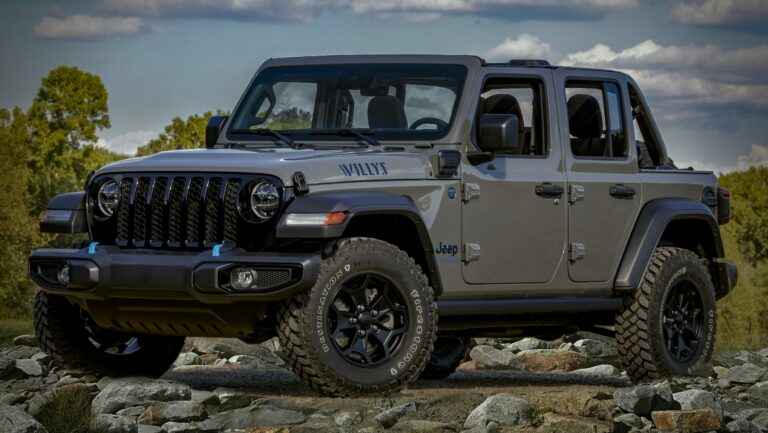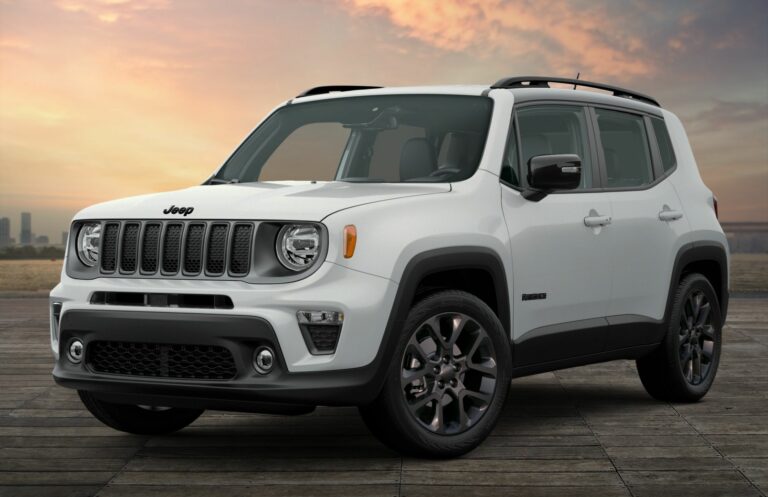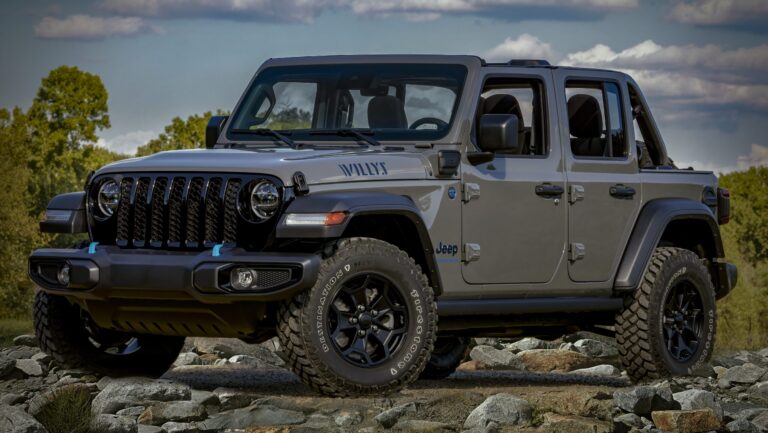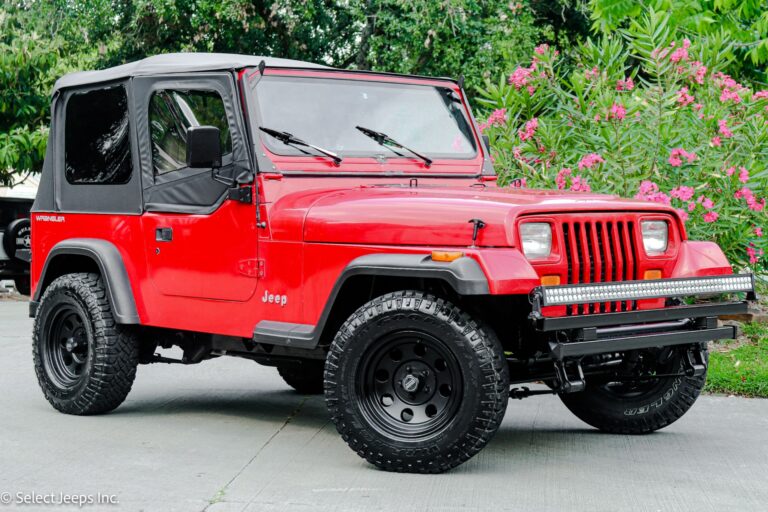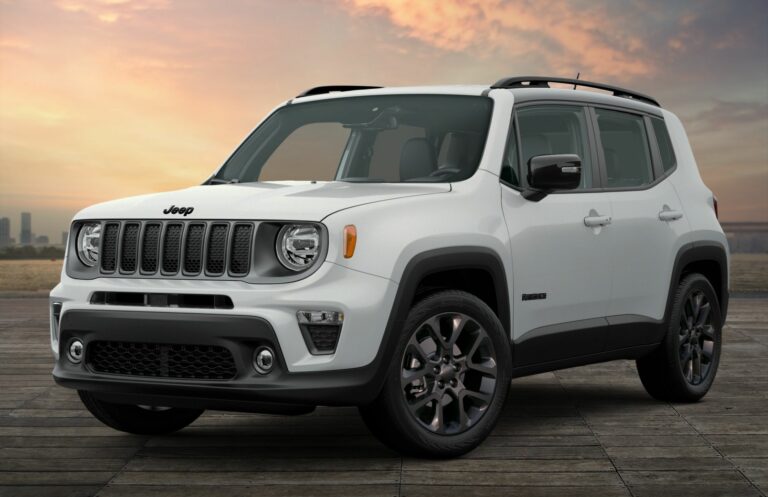88 Jeep Comanche For Sale: A Comprehensive Buyer’s Guide
88 Jeep Comanche For Sale: A Comprehensive Buyer’s Guide jeeps.truckstrend.com
The search for an "88 Jeep Comanche For Sale" isn’t just about finding a used truck; it’s about uncovering a piece of automotive history, a versatile workhorse, and a cult classic wrapped into one. The 1988 Jeep Comanche, known internally as the MJ, represents a unique blend of the beloved XJ Cherokee’s unibody comfort and capability with the practicality of a pickup truck bed. For enthusiasts, off-roaders, and those seeking a distinctive vehicle, the ’88 Comanche offers a compelling proposition. This comprehensive guide will delve into what makes the 1988 model year special, what to look for when buying one, and essential considerations for potential owners.
The Enduring Appeal of the 1988 Jeep Comanche
88 Jeep Comanche For Sale: A Comprehensive Buyer’s Guide
The Jeep Comanche was produced from 1986 to 1992, making the 1988 model year a prime example of its mid-lifecycle evolution. Built on the same unibody platform as the iconic Jeep Cherokee (XJ), the Comanche offered a more car-like ride and handling compared to traditional body-on-frame pickups, yet still delivered impressive utility and off-road prowess. Its unique design, combining the XJ’s front end with a dedicated truck bed, sets it apart from almost anything else on the road today.
For 1988, the Comanche benefited from several refinements. Engine options typically included the robust 4.0-liter AMC inline-six, renowned for its durability and torque, or the more fuel-efficient 2.5-liter AMC four-cylinder. Both manual and automatic transmissions were available, as were two-wheel-drive (2WD) and four-wheel-drive (4WD) configurations, including Jeep’s venerable Command-Trac (part-time 4WD) and Selec-Trac (full-time 4WD) systems. The choice of short (6-foot) or long (7-foot) beds further added to its versatility, catering to different needs from daily driving to serious hauling or off-road expeditions.
Key Features and Specifications of an ’88 Comanche
Understanding the specifications of the 1988 Comanche is crucial for any prospective buyer.
- Engine Options:
- 4.0L AMC I6: This engine is the most sought-after, delivering approximately 177 horsepower and 224 lb-ft of torque. Known for its legendary reliability and ease of modification, it’s the preferred choice for those seeking power and longevity.
- 2.5L AMC I4: Offering around 121 horsepower and 140 lb-ft of torque, this engine provides better fuel economy but sacrifices significant power, especially noticeable with 4WD or heavier loads.
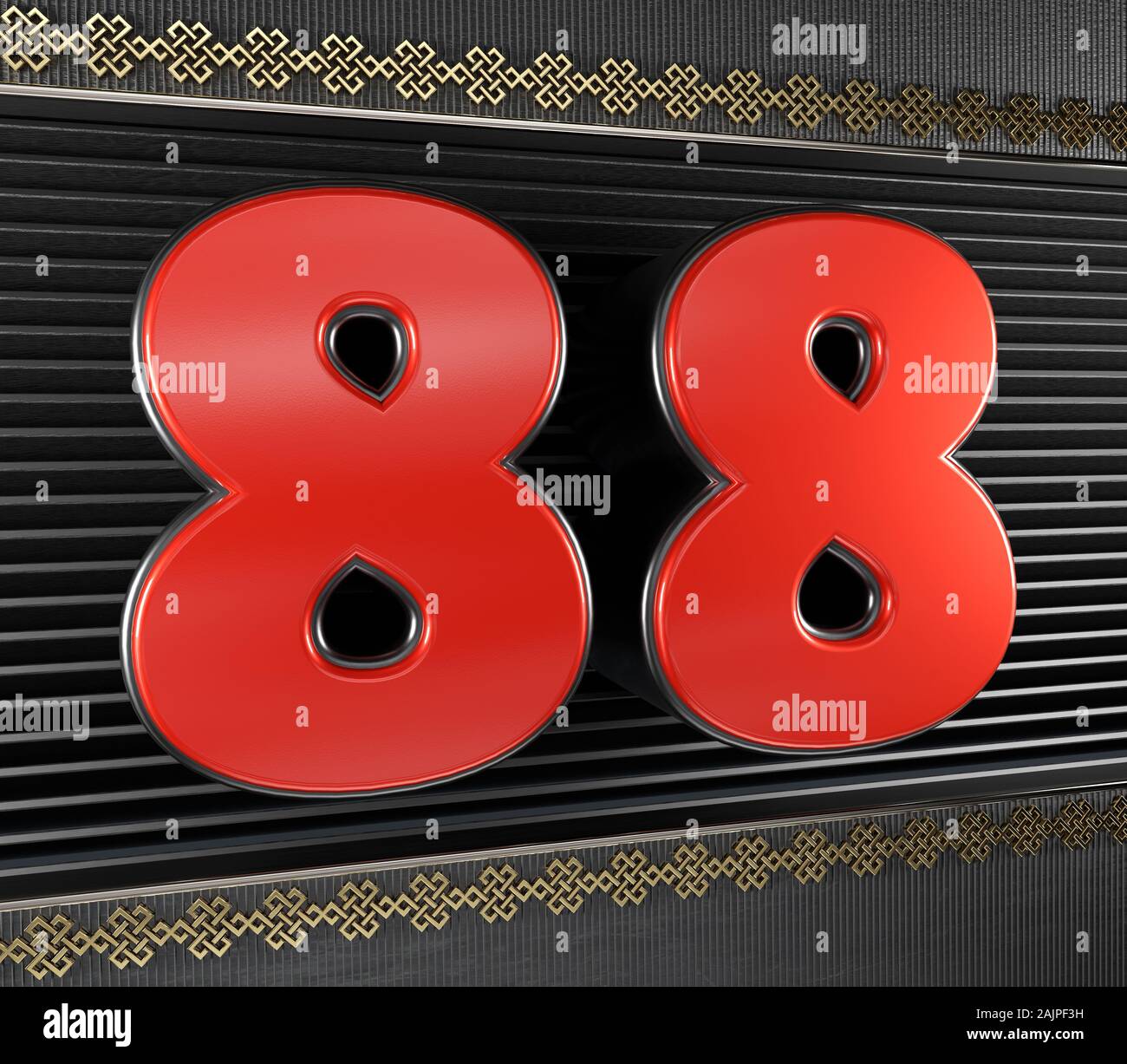
- Transmission Options:
- Manual: Peugeot BA-10/5 (5-speed) or the later, more robust Aisin AX-15 (5-speed), often paired with the 4.0L.
- Automatic: Aisin-Warner AW4 (4-speed), a highly durable and well-regarded transmission.

- Drivetrain:
- 2WD (MJ2): Ideal for those who don’t need off-road capability and prioritize fuel economy.
- 4WD (MJ4): Available with NP207 (early), NP231 Command-Trac, or NP242 Selec-Trac transfer cases. The NP231 is a part-time system, while the NP242 offers a full-time 4WD option, allowing engagement on paved surfaces.
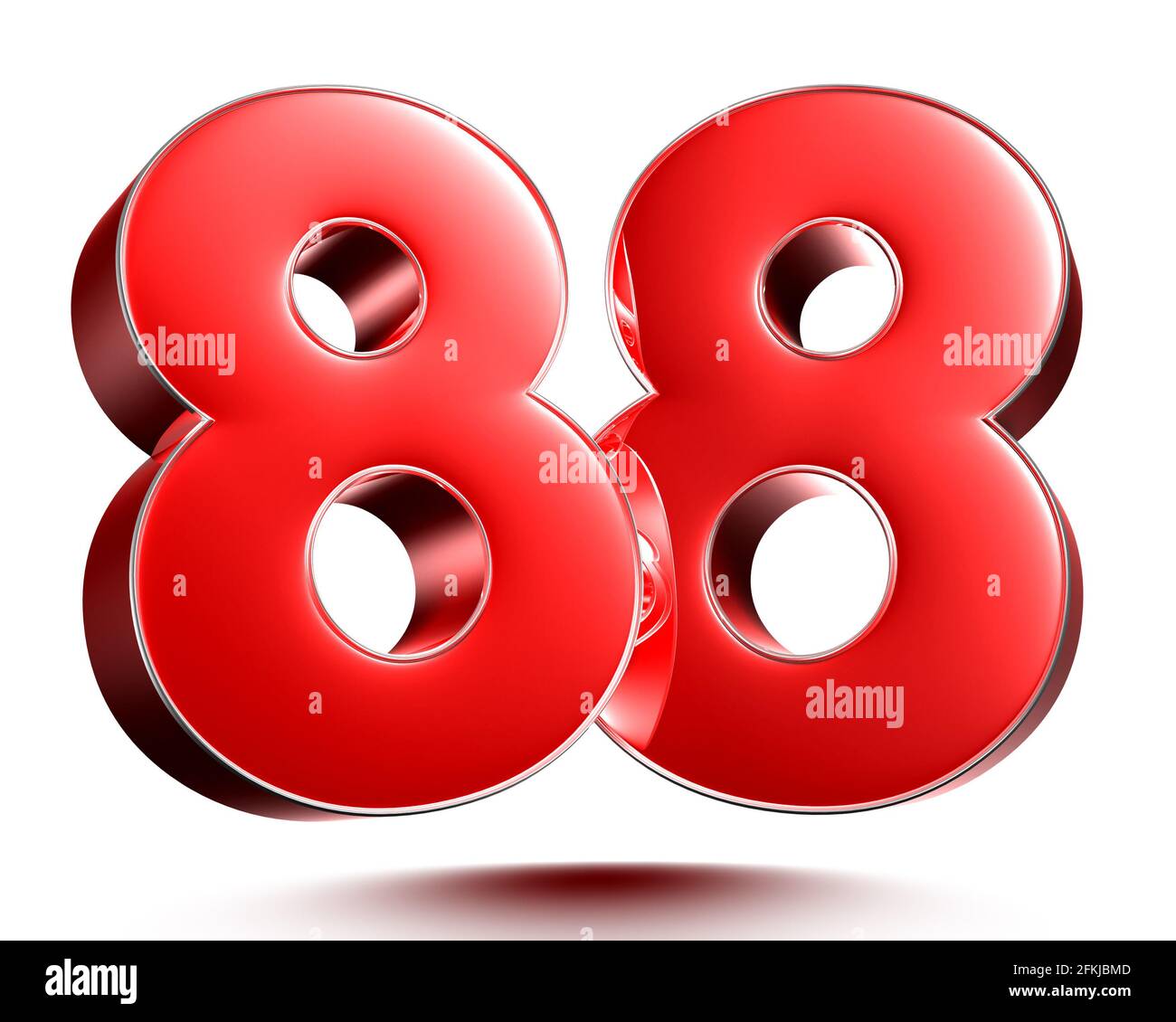
- Bed Lengths:
- Short Bed: 6-foot, more agile and common.
- Long Bed: 7-foot, providing extra hauling capacity but less maneuverable.
- Trim Levels: Variations like Pioneer, Chief, Laredo, and the sportier Eliminator offered different interior amenities, exterior styling cues, and option packages.
What to Look For When Buying an ’88 Jeep Comanche
Given the age of these vehicles, a thorough inspection is paramount. Here’s a checklist of critical areas:
1. Rust and Unibody Integrity
This is often the biggest killer of Comanches. Due to their unibody construction, rust can compromise structural integrity.
- Rocker Panels: Check thoroughly, as they are prone to severe rust.
- Floor Pans: Inspect under the carpets, especially in the footwells.
- Bed: Look for rust through the bed floor and along the wheel wells.
- Frame Rails/Pinch Welds: Crucial structural points that can suffer from rust, particularly where the unibody transitions to the rear frame sections.
- Suspension Mounting Points: Examine leaf spring mounts, shock mounts, and control arm mounts for corrosion.
2. Mechanical Health
The 4.0L engine is tough, but age takes its toll.
- Engine: Look for oil leaks (especially rear main seal, valve cover), coolant leaks (water pump, radiator), and listen for excessive valvetrain noise or knocking. Check the color of the oil and coolant. A compression test is highly recommended.
- Transmission: For automatics, check fluid color and smell (should be red, not brown or burnt). Test all gears and look for smooth shifts. For manuals, check clutch engagement and listen for grinding.
- Transfer Case: Ensure 4WD engages properly (if applicable). Listen for unusual noises.
- Axles: Check for differential leaks and unusual noises during the test drive.
- Suspension: Worn leaf springs can cause sagging. Check bushings, shocks, and steering components for play.
- Brakes: Inspect pads, rotors/drums, and brake lines for rust or leaks.
3. Electrical System and Interior
While less critical than mechanicals, these can indicate overall care.
- Gauges and Lights: Ensure all dashboard gauges work correctly. Test all exterior and interior lights.
- HVAC: Check if the heater and AC (if equipped) function.
- Power Accessories: Test windows, locks, and mirrors.
- Interior Condition: Assess the seats (common for tears), headliner (often sags), and dashboard (prone to cracks).
4. Documentation
Always ask for service records and a clean title. A history of regular maintenance is a good sign.
The Buying Process: Tips for a Successful Purchase
- Define Your Needs and Budget: Are you looking for a project, a daily driver, or an off-road rig? Your budget should account for the purchase price, potential immediate repairs, and future modifications.
- Research Market Value: Prices vary wildly based on condition, mileage, engine, 4WD, and location. Consult online forums, classifieds, and specialized auction sites for recent sale prices.
- Inspect Thoroughly (or Hire a Pro): If you’re not mechanically inclined, invest in a pre-purchase inspection by a trusted mechanic familiar with older Jeeps.
- Test Drive: Drive the Comanche on various road types – city, highway, and ideally, some uneven terrain if it’s a 4WD. Pay attention to steering, braking, acceleration, and any unusual noises. Test all gears and 4WD modes.
- Negotiate: Be prepared to negotiate based on your inspection findings. Rust and major mechanical issues should significantly impact the price.
- Secure the Ensure the seller has a clear title in their name and that the VIN on the title matches the vehicle.
Potential Challenges and Solutions
Owning an ’88 Comanche comes with its unique set of challenges, but most have viable solutions.
- Parts Availability: While many parts are interchangeable with the ubiquitous XJ Cherokee, specific Comanche-only parts (like bed panels, taillights, some interior trim) can be harder to source. Solution: Leverage online forums, dedicated Comanche parts suppliers, and salvage yards.
- Rust Repair: Extensive rust can be costly and time-consuming to repair, potentially requiring professional welding. Solution: Prioritize a low-rust example. Factor in professional repair costs if necessary.
- Finding Unmolested Examples: Many Comanches have been modified for off-roading or neglected over the years. Finding a well-preserved, stock example is rare. Solution: Be patient in your search, or be prepared for a restoration project.
- Fuel Economy: Especially with the 4.0L engine and 4WD, don’t expect modern fuel efficiency. Solution: Embrace it, or consider the 2.5L if fuel economy is a top priority.
Why an ’88 Comanche Might Be Right For You
Despite the challenges, the 1988 Jeep Comanche offers a compelling package for the right buyer:
- Unique Classic: It stands out in a crowd and holds a special place in Jeep history.
- Capable Workhorse: With a respectable towing capacity (up to 5,000 lbs with the 4.0L) and a durable bed, it’s a capable light-duty truck.
- Off-Road Prowess: Sharing its DNA with the XJ, it’s an excellent platform for off-road modifications.
- Strong Community Support: A dedicated community of Comanche and XJ enthusiasts provides a wealth of knowledge, advice, and camaraderie.
- Customization Potential: From mild lifts to full overland builds, the Comanche is a blank canvas for personalization.
’88 Jeep Comanche For Sale: Price Guide
The price of an ’88 Jeep Comanche can fluctuate significantly based on its condition, mileage, drivetrain, engine, and geographical location. This table provides a general estimate.
| Condition Category | Description | Average Price Range (USD) | Key Factors Influencing Price |
|---|---|---|---|
| Poor/Project | Significant rust, major mechanical issues, non-running, incomplete. Requires extensive work. | $1,000 – $3,500 | High mileage, severe rust (especially structural), seized engine, major drivetrain failure, missing parts, salvage title. |
| Fair | Running and driving, but with noticeable rust, cosmetic flaws, and/or minor mechanical issues. Needs work. | $3,500 – $7,000 | Moderate surface rust, worn interior, minor leaks, high mileage (200k+), 2WD, 2.5L engine, automatic transmission (less desirable to some), unaddressed maintenance. |
| Good | Solid daily driver potential. Minimal rust, good running condition, minor cosmetic wear. | $7,000 – $12,000 | Low to moderate mileage (100k-200k), minimal body rust, 4.0L engine, 4WD (especially Selec-Trac), manual transmission, well-maintained, mostly original. |
| Excellent | Well-preserved, minimal to no rust, excellent mechanical condition, clean interior. | $12,000 – $20,000 | Low mileage (<100k), factory options (AC, power windows), no significant rust, original paint in good condition, pristine interior, extensive service records, desirable trim (Eliminator). |
| Concours/Show | Professionally restored to original condition or exceptionally low mileage, factory-fresh. | $20,000+ | Extremely rare, perfect condition, documented history, original components, very low mileage (<50k), specific rare configurations. |
Note: These are estimates. Prices can be higher or lower depending on market demand, modifications (if desirable), and seller urgency.
Frequently Asked Questions (FAQ) about the ’88 Jeep Comanche
Q1: Is the ’88 Jeep Comanche a good daily driver?
A1: Yes, if properly maintained and in good condition, an ’88 Comanche with the 4.0L engine can be a reliable daily driver. Its unibody construction provides a more comfortable ride than many traditional pickups of its era. However, be prepared for older vehicle quirks and lower fuel economy compared to modern vehicles.
Q2: Are parts hard to find for an ’88 Comanche?
A2: Many mechanical and body parts are interchangeable with the highly popular Jeep Cherokee (XJ) from the same era, making common repairs relatively easy. However, specific Comanche-only body panels (like the bed, tailgate, and some rear lighting components) can be more challenging and expensive to source, often requiring used parts or specialized aftermarket suppliers.
Q3: What’s the main difference between a Jeep Comanche and a Jeep Cherokee?
A3: The fundamental difference is the rear section. Both share the same unibody front clip and cabin design (up to the B-pillar), but the Cherokee is an SUV with an enclosed cargo area, while the Comanche features an open pickup truck bed. This gives the Comanche the utility of a truck while retaining the XJ’s ride quality.
Q4: What are the most common problems to look out for with an ’88 Comanche?
A4: The most prevalent issues are rust (especially in rocker panels, floorboards, and frame sections), oil leaks (particularly the rear main seal on the 4.0L), and worn suspension components. Electrical issues can also arise due to age, and cooling system maintenance is critical for the 4.0L engine.
Q5: Can an ’88 Comanche tow effectively?
A5: Yes, with the 4.0L engine, a properly equipped ’88 Comanche can tow up to 5,000 pounds (with appropriate gearing and a trailer brake controller), making it suitable for light to medium towing tasks like small boats, ATVs, or utility trailers.
Q6: Is the ’88 Comanche good for off-roading?
A6: Absolutely. Sharing its robust XJ platform, the 4WD ’88 Comanche is an excellent off-road vehicle. Its solid axles, compact size, and strong 4.0L engine make it highly capable on trails. It’s also a popular choice for modifications, including lift kits, larger tires, and aftermarket armor.
Conclusion
The 1988 Jeep Comanche is more than just a used truck; it’s a piece of American automotive heritage that offers a unique blend of utility, capability, and classic appeal. For those willing to invest the time in finding a well-preserved example and the effort in maintaining an older vehicle, the ’88 Comanche delivers an incredibly rewarding ownership experience. Whether you’re looking for a distinctive daily driver, a capable workhorse, or a versatile off-road project, the MJ continues to command respect and appreciation from a dedicated community. Its enduring legacy ensures that "88 Jeep Comanche For Sale" will remain a sought-after phrase for years to come.


